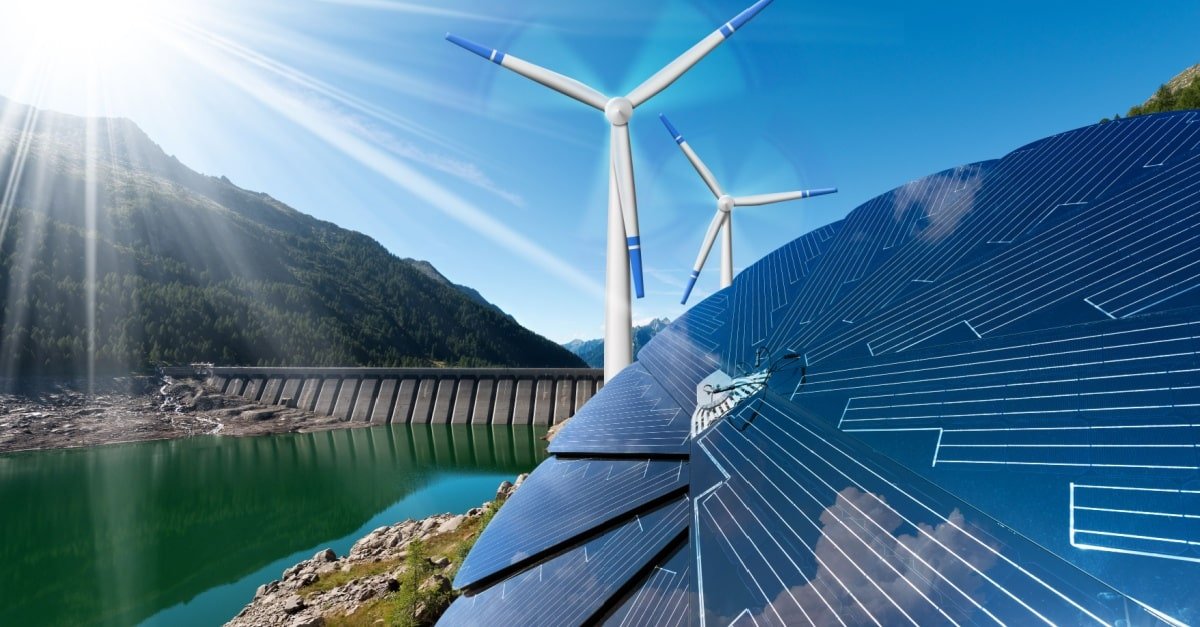
Wind and Water Shortfalls Raise Questions About Renewable Resilience
- June 18, 2025
In 2023, renewable energy provided around 40% of global electricity generation. However, coal continues to attract a significant share of fossil fuel investment, with around 18 cents for every $1 spent, reflecting its role as a reliable energy source in many regions.
In 2024, global wind capacity has reached 1,136 gigawatts (GW), adding 117 GW in new installations.
Meanwhile, hydropower continues to lead the world’s renewable electricity output. It’s projected to grow by 3.5% annually between 2024 and 2030, reaching around 5,400 terawatt-hours (TWh) per year.
Yet recent events have exposed a critical weakness: their reliance on weather and seasonal patterns. Wind lulls across Europe and extended hydro shortages in Brazil and China have prompted some countries to lean back on fossil fuels to ensure energy security, highlighting the need for more resilient systems and dependable backup solutions.
(Also read: Seasonal Shifts Challenge Renewable Reality)
Hydrological droughts in Brazil
Brazil is the world’s second-largest producer of hydroelectricity. In 2023, the country generated 41 GW of hydropower.
Despite boosting hydropower capacity from 75,570 MW in 2006 to 108,739 MW by late 2021, Brazil’s hydroelectric output has been hit hard by a decade of severe droughts—impacting every region except the north.
In 2021, the government issued a stark warning: the nation’s power crisis was more severe than anticipated. A historic drought had pushed hydropower reserves to their lowest point in 91 years, exposing the depth of the crisis and straining the country’s primary energy source.
The ministry also announced a fresh hike in electricity prices, with drought-hit consumers facing an average increase of 6.78%. Regulators had already implemented several rate hikes in response to the prolonged water shortage.
Severe droughts that depleted Brazil’s hydro reserves triggered a sharp increase in liquefied natural gas (LNG) imports, mainly from the United States. This unexpected demand tightened global supply and intensified competition across Asia and Europe. As a result, LNG prices in Europe soared to record-breaking levels.
In August 2024, Brazil scaled back hydropower as drought conditions persisted, disrupting global hydro output. Despite strong water reserves earlier in the year, a severe drought along the Madeira River forced the shutdown of two major hydro plants. The Electric Sector Monitoring Committee urged a shift to thermal power and imports from Argentina and Uruguay.
(Also read: EV Boom Sparks Energy Supply Concerns)
Drop in China’s hydropower output
China, the world’s top hydropower producer, has faced persistent droughts since 2021, knocking its generation down by roughly 4.9% in 2023—the steepest drop in two decades and responsible for almost two‑thirds of the global decline in hydropower that year.
The southwest, home to the Yangtze cascade (including Three Gorges, Baihetan, and Xiluodu), bore the brunt. The region, typically reliant on summer monsoon rains, faced a prolonged drought from mid-2022 to 2024. With rainfall down by over 50% in much of Tibet and parts of Sichuan and Yunnan, river flows plunged.
The China Electricity Council (CEC) confirmed coal-fired electricity supply rose 6.1% in 2023, largely to offset hydropower losses. In fact, coal remained dominant in China’s energy mix in 2023, providing nearly 60% of the country’s electricity. This underscored that even record growth in solar and wind capacity had not yet triggered a significant increase in renewable power output.
Wind Droughts in Europe
A major study looking at wind patterns from 1979 to 2023 found that Northwestern Europe is especially prone to so-called “wind droughts”—stretches of unusually still weather that sharply reduce wind power output.
In 2021, annual wind speeds in parts of northwestern and central Europe dropped to their lowest levels since at least 1979. Ireland, the UK, the Czech Republic, Denmark, and Germany saw the biggest drops in wind speeds, with Ireland seeing the steepest decline.
This matters because all five countries depend heavily on wind power. Germany has the largest wind capacity in Europe while the UK ranks third. Wind also supplies a major share of electricity in Denmark and Ireland.
How affected countries coped
In 2021, wind output in Germany dropped from 130 TWh in 2020 to 113.6 TWh. Overall renewable output fell by nearly 8%. With electricity demand up by 3.7%, fossil fuel use, particularly coal, rose by 11% to cover the gap.
To safeguard supply during the wind lull, the Federal Network Agency kept Uniper’s Heyden 4 hard‑coal unit in reserve from July 2021 to September 2022. The plant—formally off the market—was restarted seven times at grid operators’ request to smooth power flows after the planned shutdown of the Grohnde nuclear station and during periods of weak wind.
In the UK, load factors fell by around 13%, pushing much-needed compensation power into action. Additionally, its wind generation dropped to just 6% of its electricity supply around mid-December 2024 and early January 2025. Gas-fired plants ramped up to meet over 73% of Great Britain’s demand. This surge led to record-high wholesale electricity prices, peaking near £2,900 per megawatt-hour (MWh), which is 40 times the average cost.
Meanwhile, Ireland lost about 15-16% of potential wind output. As a result, the country increased its use of fossil fuels—coal and oil usage more than tripled. It is currently accelerating efforts to strengthen grid resilience by boosting interconnection capacity, including the under-construction Celtic Interconnector to France and existing links to the UK.
Because wind power contributed just 0.3% of the Czech Republic’s total electricity generation in 2020, the wind drought’s overall impact on its national power supply was minimal. According to the International Energy Agency (IEA), coal remains central to the country’s energy mix. In 2022, coal made up 44% of the generation mix, the highest share, followed by nuclear energy at 37%.
Wind energy outlook in the PH
Wind power’s footprint remains modest in the Philippines. In 2023, it made up just 2% of installed power capacity and supplied around 1% of the country’s electricity. Onshore wind has grown steadily since 2010 and is projected to expand more rapidly through 2035, with capacity expected to reach 15% of the total mix by then.
Still, the country must brace for wind variability, an issue that has challenged even advanced markets like Europe. A 2024 study by researcher Robert Idel found that in the Philippines, wind energy may seem promising due to its higher average capacity factor compared to solar. But when it comes to reliability and cost-efficiency, wind faces serious hurdles, especially during the summer.
From June to August, wind capacity factors fall so sharply that they dip below solar’s output for nearly three months. This slump occurs just when electricity demand peaks, exposing a critical mismatch between supply and need.
Because of this seasonal inconsistency, the long-term full system cost of relying solely on wind—referred to as the LFSCOE—is more than triple that of solar. This highlights a major challenge for wind in the Philippines: while it can deliver strong output in the right seasons, its unpredictability undermines its practicality as a backbone energy source without significant support infrastructure.
Pursuing renewables with eyes wide open
While renewables are vital to the world’s clean energy transition, recent disruptions have laid bare a crucial truth: wind and hydropower, though powerful, remain at the mercy of seasonal and climatic shifts. As droughts drain reservoirs and wind lulls mute turbines, energy systems risk exposure during peak demand, forcing a return to fossil fuel generation to plug the gaps.
This doesn’t mean turning away from renewables. It means acknowledging that until storage technologies, grid infrastructure, and flexible backup systems catch up, fossil fuels like gas and coal will continue playing a stabilizing role. In particular, we need to move beyond short-duration battery storage and invest in long-duration solutions—technologies capable of delivering power over days or even weeks—to truly support renewables through prolonged supply dips.
To secure a sustainable energy future, countries must pair renewable growth with pragmatic planning, ensuring that reliability and resilience are never sacrificed in the race toward decarbonization.
Sources:
https://asianbusinessreview.com/news/global-wind-energy-adds-117-gw-capacity-in-2024
https://www.hydropower.org/iha/discover-facts-about-hydropower
https://www.iea.org/energy-system/renewables/hydroelectricity
https://www.nature.com/articles/s43247-024-01260-7
https://climate.copernicus.eu/esotc/2021/low-winds
https://bigthink.com/strange-maps/europe-wind-drought/
https://iea-wind.org/wp-content/uploads/2022/12/IEA_Wind_TCP_AR2021_Ireland.pdf
https://www.power-technology.com/data-insights/wind-power-in-the-philippines
https://drive.google.com/file/d/19PQgA5jhDs0mC8AK8RvCtapFFUV1F9R-/view
https://www.mdpi.com/2073-4441/14/4/601
https://www.aljazeera.com/economy/2021/9/1/brazil-warns-of-energy-crisis-with-record-drought https://www.iea.org/reports/co2-emissions-in-2023/weather-and-continued-covid-19-reopening-effects-played-an-important-role-in-the-emissions-increase
https://www.reuters.com/markets/commodities/chinas-hydro-generators-wait-rains-come-2024-03-22
https://world-nuclear.org/information-library/country-profiles/countries-a-f/czech-republic



